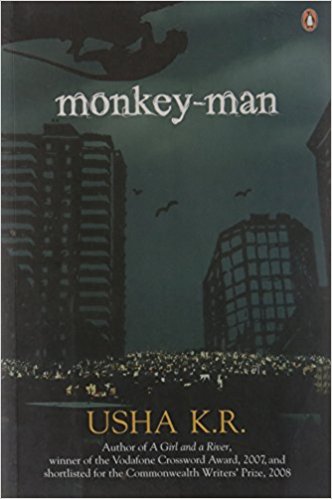Monkey-man is K.R. Usha’s third novel and the first to explicitly place itself in a named city. It is hard to imagine a novel without a city; at least a geographical location, however nebulous. But there are two ways in which cities enter a novel. The writer can fix upon the city first then etch the lives of its inhabitants. Or he/she can write about the inhabitants and let the city take shape through them. The contours of the city would naturally be less sharply defined in the latter case.
In Graham Greene’s The Quiet American, the city is most definitely Saigon; in fact that is the whole point of the story. In Manohar Shyam Joshi’s Ta Ta Professor or The Perplexity of Haria Hercules, it is definitely Kumaon but not a particular city. It can be any town in Kumaon. In Chekhov’s Three Sisters it is any provincial town of Russia and definitely Moscow.
On the other hand, if we take Jainendra’s or Krisna Baldev Vaid’s novels, we can place them in any city anywhere as far as the thematic content goes, despite their being set in particular towns of North India. In K.R. Usha’s earlier novel, A Girl and A River, the location was significant but it was secondary to the period or time, in which the story unfolded and the lives of the protagonists were shaped. In Monkey-man, however, she has no hesitation in saying she has chosen Bangalore, the I.T. hub of India today, but as slow-paced as government pensions, sixty years ago, as the city for the narrative.

